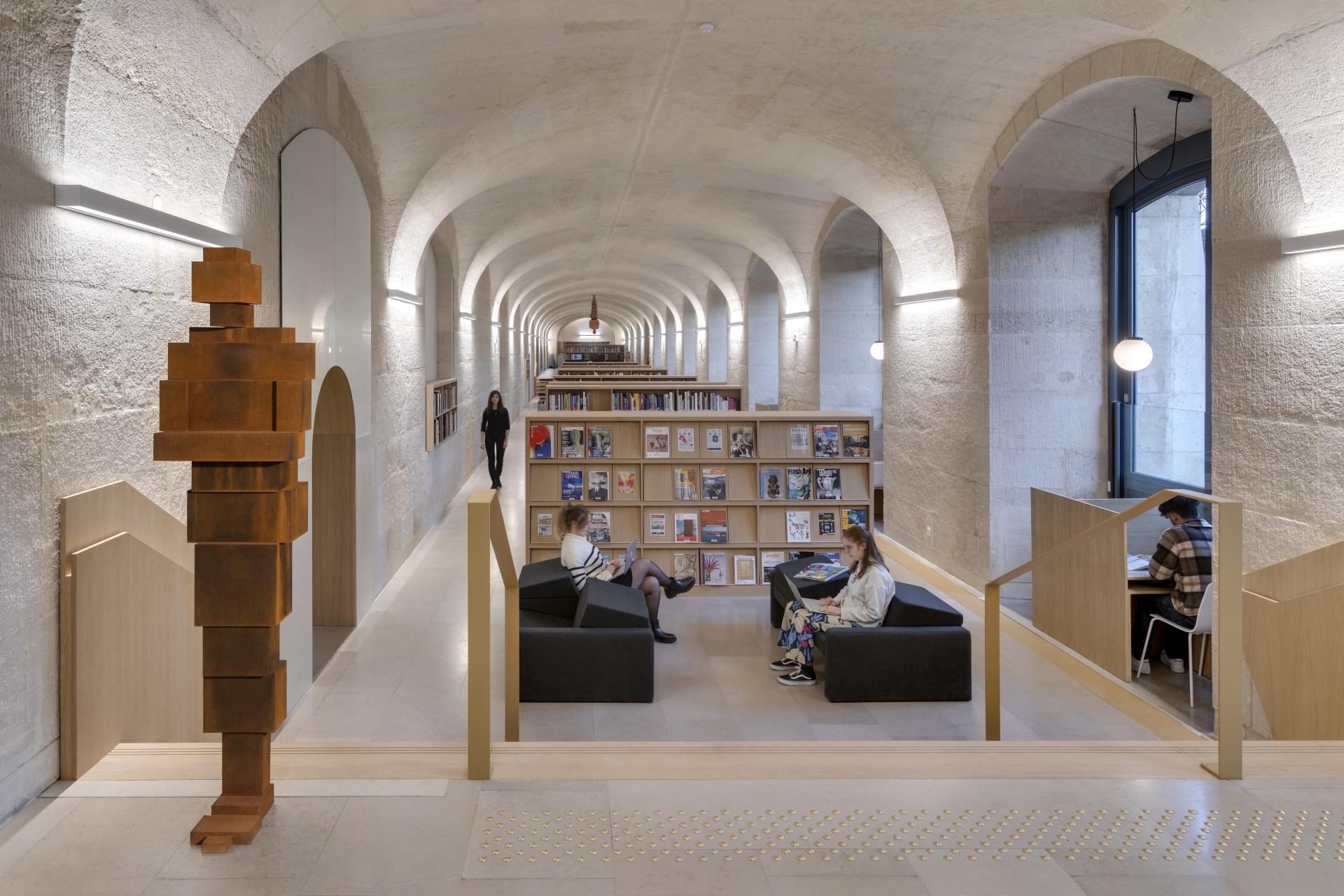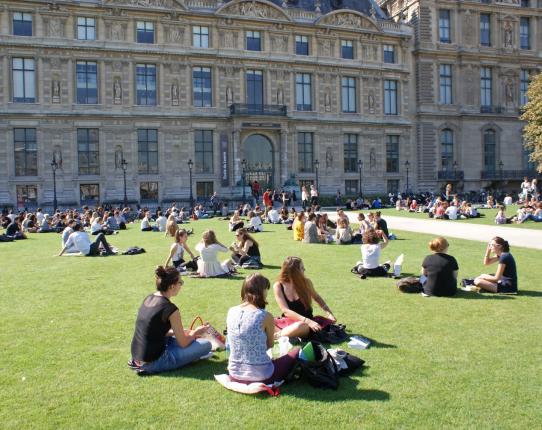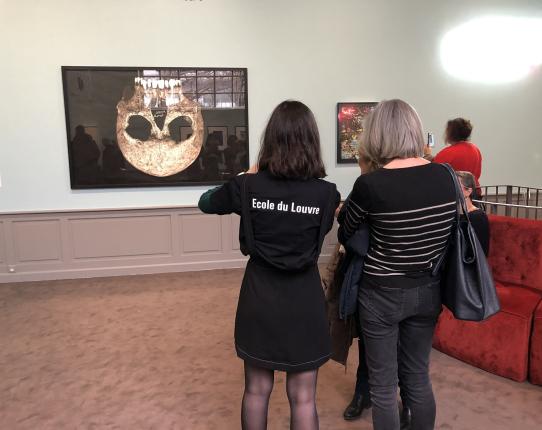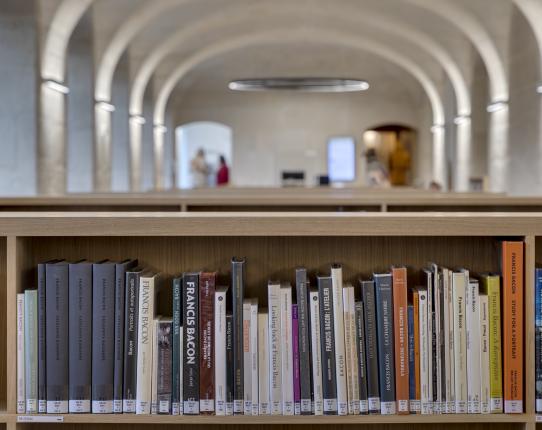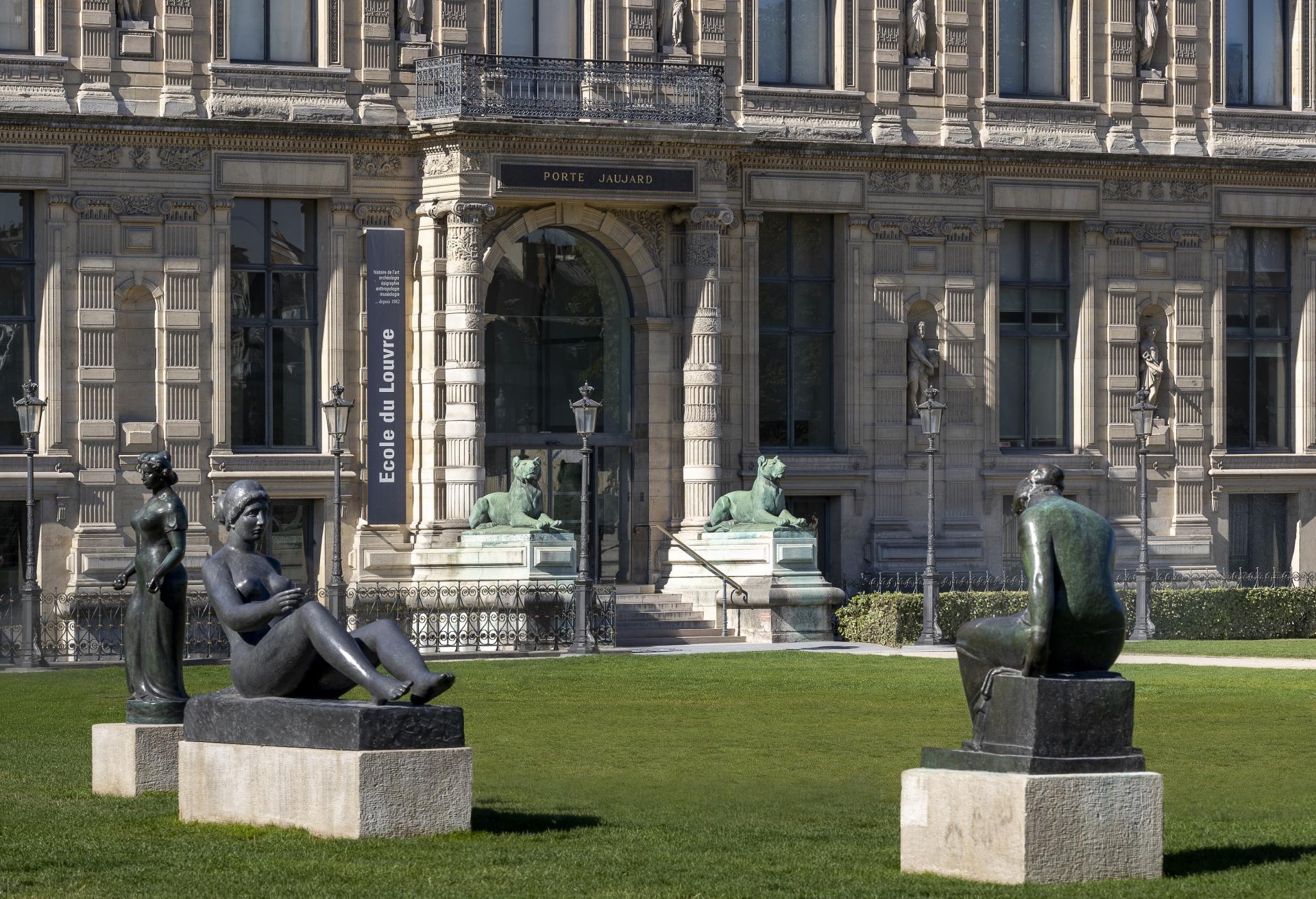
Entrance exam to the school’s undergraduate programme
Summary
- What is the specific educational system of the École du Louvre’s undergraduate programme?
- The first stage of the entrance exam: a pre-selection on Parcoursup
- The second stage of the entrance exam: a written test composed of three exercises
- Advice for preparing for the entrance exam to the École du Louvre
What is the specific educational system of the École du Louvre’s undergraduate programme?
Two fundamental and original elements make up the unique educational system of the Ecole du Louvre’s first cycle: its curriculum, and its method.
While French universities now favour a multidisciplinary approach during the first years of higher education, by drawing bridges between different school subjects, the Ecole du Louvre has chosen to focus its curriculum on art history and archaeology, both anchored on the material testimonies of civilisations.
Based on teaching observation skills and the relationship with artworks covered within its historical but also material background, the school’s educational system actively solicits (visual and textual) memory as well as (comparative and contextual) reflection.
The first cycle combines two modules in an original fashion. The first module provides a thorough base of general art history knowledge, while the second allows students to choose specialist subjects among the 30 subjects the school teaches.
The main core of the curriculum successively tackles, over three years and in a condensed form, all the eras and continents through their art productions and their civilisations.
In addition to this is an approach of creative techniques, classes on history of collections and iconography and international languages and possibly optional classes. In the third year, some classes are taught in foreign languages.
Assimilating this knowledge base requires:
- curiosity and a pronounced taste for art, museums, heritage, reading…
- the ability to take on a significant workload,
- a strong geographical and historical knowledge,
- excellent command of writing,
- sufficient autonomy and maturity.
The assessment is mainly based on the reasoned restitution of knowledge in writing. For structural and organisational reasons, the teaching at the school is mainly entrusted to conservators and museum and heritage professionals, so continuous monitoring and oral exams are limited.
Exams therefore mainly take place at the end of the year and consist of written tests: dissertations or comments on works, the method of which is tested throughout the year in the presence of art works, in classrooms or in one-to-one sessions, offered on a voluntary basis in the first year.
The first stage of the entrance exam: a pre-selection on Parcoursup
The Parcoursup system is the only way to register for the entrance exam.
Application fee: 65 euros (students with scholarships are exempt)
A first selection of candidates is made based on grades students obtained in French at the baccalauréat in the second year of college and grades obtained in some subjects during the second year and first two terms of the third year of college.
The pre-selected candidates are invited by email the week before the entrance exam for the second stage of the selection.
Candidates who have taken the “Art history” specialising and/or optional course in their final year of college are exempt from pre-selection and directly invited to the second stage.
The second stage of the entrance exam: a written test composed of three exercises
Pre-selected candidates are called for the second stage of the entrance exam which consists of a written test composed of three exercises: questions to assess the candidates’ ability to situate works and events in space and time; an exercise in describing a work of art; an art history composition.
- A series of questions to assess candidates' geographical knowledge (reading maps, plans, etc.) and chronological knowledge (mastering chronological benchmarks and using a timeline).
The common core curriculum in the first year of the first cycle tackles ancient times, civilisations and archaeological sites from Oriental, Egyptian, Greek, Roman, Indian and Chinese Antiquities, therefore it is essential that students can base their future knowledge and sold geographical and historical knowledge.
The exam lasts about 20 minutes and is graded out of 20 points.
This test assesses the observation and attention candidates apply to an art work (a colour copy submitted to candidates), as well as their ability to structure a description, combining acute observation skills, precise vocabulary and a strong command of writing.
This description cannot include interpretation or background. Five points will be deducted to any copy including more than 20 orthographic, lexical or grammatical errors.
The exam lasts about 40 minutes and is graded out of 20 points.
For this written piece the candidate needs to use their general knowledge acquired at school and in their personal life, but also reflect the preparatory work the candidate completed during the school year.
The topic candidates will write about will allow them to quote art works which are studied every year as part of the Ecole du Louvre’s curriculum (see further down) and to write about them – and potentially others – in a clear and organised way.
The test also allows us to assess the candidates’ command of French and writing. Five points will be deducted to any copy including more than 20 orthographic, lexical or grammatical errors.
The exam lasts about two hours and is graded out of 40 points.
At the start of the school year prior to the entrance exam, a list of works (between 25 and 40) is made available to candidates on the École du Louvre website. The works included on the list – heritage sites, historic monuments, objects and works preserved in public collections, in France and abroad – is effectively a programme candidates must work on throughout the year. A minimum of four examples, taken from this list, will be required in the written piece.
The works in the program are easily accessible on the websites of the institutions responsible for their conservation and promotion. Candidates are advised to first consult the documentary resources available online on these institutional sites. A summary bibliography, including one or two works on general art history, can be offered in addition.
Advice for preparing for the entrance exam to the École du Louvre
Preparing for the École du Louvre competition requires solid motivation and personal commitment. However, it is not necessary to take courses or group preparation.
- The first exercise is based on general knowledge of human history and physical geography which is provided by secondary education. Revising both, including the main historic eras from Prehistory to this day (key dates), the physical and historic geography of France and geopolitics, is recommended.
- The second exercise is a description of a work of art. There is no ready-made method for translating what we see into words. However, three criteria are fundamental: the ability to sharpen one's perspective, the precision of one’s vocabulary, the structure and quality of the text produced. This test does not require any particular knowledge of art history.
- The third exercise is a written piece on art history tackling a fairly general subject spanning a long chronological period and covering varied geographical areas. It is based on the preparatory work the candidate will have done based on a list of art works provided by the École du Louvre.
Its aim is to assess the candidates’ command of the written language - on the one hand the form (spelling, grammar, syntax, elegance of style) and on the other hand the content which we expect to be well-argued and illustrated with specific examples. It is imperative to structure this written piece with an introduction, presenting the subject, its issues and outlining a plan. The rest of the piece will be organised into a few parts which will be connected and will include key ideas with referenced examples (title first [must be underlined], date, place of conservation/location). The assignment will end with a conclusion summing up the main points.
The specificity of a written piece on art history is that it requires concrete examples of works which have to be named and identified precisely. Candidates should not list examples but should introduce them judiciously, explaining their choice. Candidates must cite at least four examples from the list of works provided by the school, but also highlight their personal visual culture.
